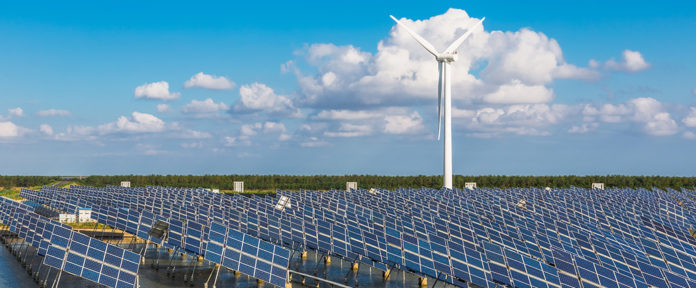
Despite slowing demand growth, China will remain the world’s largest primary energy consumer out to 2050, growing by as much as 14% to account for over 21% of global energy consumption, BP predicted this week. Meanwhile, India’s energy demand is projected to jump by as much as 153%, reaching 12% of the global total.
Released last week, this year’s BP Energy Outlook covers three scenarios of how the world’s energy use will evolve: one assuming a rapid transition to policies that reduce carbon emissions from energy use by around 70% by 2050; an even faster transition that BP refers to as net zero, in which shifts in societal practices reinforce policy changes to reduce carbon emissions by 95% by 2050; and business-as-usual scenario in which assumes government policies and societal practices continue evolving as they have in recent years.
China
China’s energy demand is projected to edge up by a 0.4% compound annual rate to 2050 under the business-as-usual scenario. Under the rapid transition and net zero scenarios, demand is forecast to increase just 0.1% over that time. “With the economy size nearly tripling from 2018 to 2050, China’s energy intensity declines by over 60% in all scenarios,” the company noted in the outlook. Energy intensity is the amount of energy used per unit of gross domestic product.
China’s share in global energy demand drops from 24% in 2018 to 23% in the rapid transition scenario, 22% under net zero and 21% under the business-as-usual scenario by 2050. “Nonetheless, China remains the world’s largest consumer,” the company added.
Oil’s share of Chinese energy demand by 2050 is projected to drop by 74% under net zero, 52% under rapid transition and 15% under business-as-usual. This means it would decline from 20% of the country’s energy mix in 2018 to as little as 5% under net zero.
Coal’s share of the Chinese power generation mix declines sharply from 2018 to 2050 under all scenarios, falling from 59% to 7% under rapid transition, 4% in net zero and 29% under business-as-usual. During that time, the country is also expected to cut production of coal drastically, dropping by 90% under rapid transition and 54% under business-as-usual. The net zero scenario doesn’t call for any coal consumption or production in 2050.
Renewables expand rapidly in China to 2050, the outlook projects, with an annual growth rate of more than 5.5% per year in all scenarios. Renewables’ share of the energy mix increases sharply during that time, reaching 48%, 55% and 23% in rapid transition, net zero and business-as-usual scenarios, respectively.
By 2050, China’s projected net carbon dioxide emissions from energy use drop by 99% in the net zero scenario, by 84% under rapid transition and 35% under business-as-usual.
India
In India, the study projects that energy consumption will grow by a compound annual rate of 3% under business-as-usual, 2.5% under rapid transition and 2.6% under net zero.
“As result of this strong growth, India accounts for 35% of the increase in global primary energy consumption in 2018-2050 in the business-as-usual scenario,” the company stated. “In rapid and net zero, India absorbs 85% and 89% of the global increase in primary energy consumption over the outlook, respectively.” Primary energy is comprised of commercially-traded fuels and
excludes traditional biomass. According to the outlook the primary energy values of nuclear, hydro and electricity from renewable sources have been derived by calculating the equivalent amount of fossil fuel required to generate the same volume of electricity in a thermal power station.
BP notes that renewable energy growth is intense in the three scenarios over the forecast period, with average growth per year in the range of 9% to 13%. “As a result, renewable energy becomes the largest source of primary energy in 2050 in rapid and net zero, and the second largest under business-as-usual after coal,” the company said. Renewable energy represents between 22%, under business-as-usual, and 69%, under net zero, of India’s total primary energy sources in 2050.
The share of natural gas in total primary energy grows in all three scenarios, increasing from 6% in 2018 to 10%-16% in 2050.
Coal’s share in total primary energy by 2050 drops by 51% under rapid transition and 80% under net zero; however, under business-as-usual, coal is projected to rise by 83% to account for 35% of India’s consumption.
The company noted a rise in India’s electrification over the period, underpinned by substantial build-out of new generating capacity. Power demand is projected to increase threefold in all scenarios by 2050. “As a result of this strong growth, this sector absorbs over 50% of total primary energy in 2050 under business-as-usual and around three-quarters in rapid and net zero,” BP stated.
Carbon emissions vary widely by scenario. Under business-as-usual, India’s emissions increase by around 90% in 2050. In rapid and net zero, emissions decrease by 53% and 99%, respectively.
The 2019 BP Energy Outlook documents may be downloaded from the BP website.